
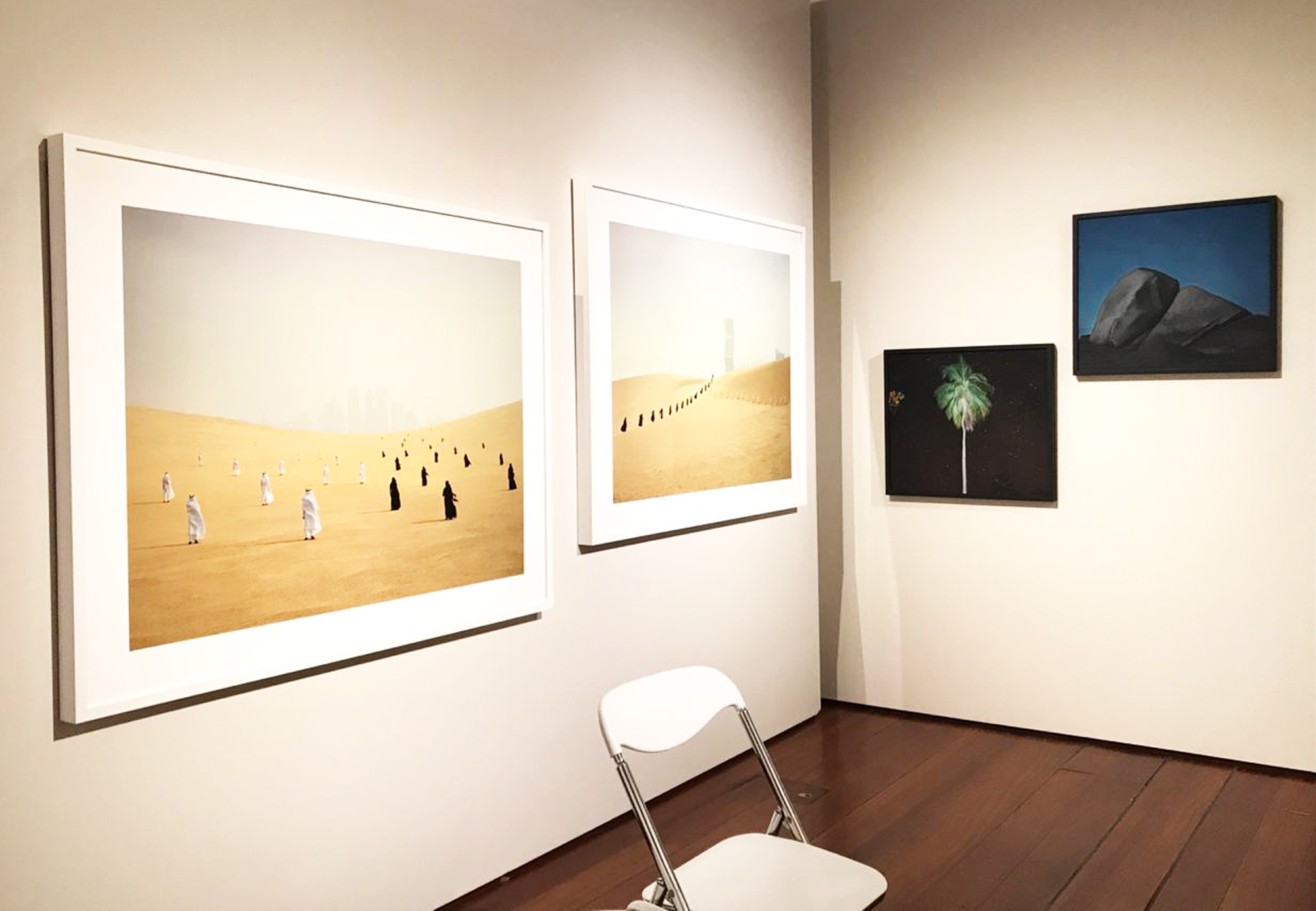
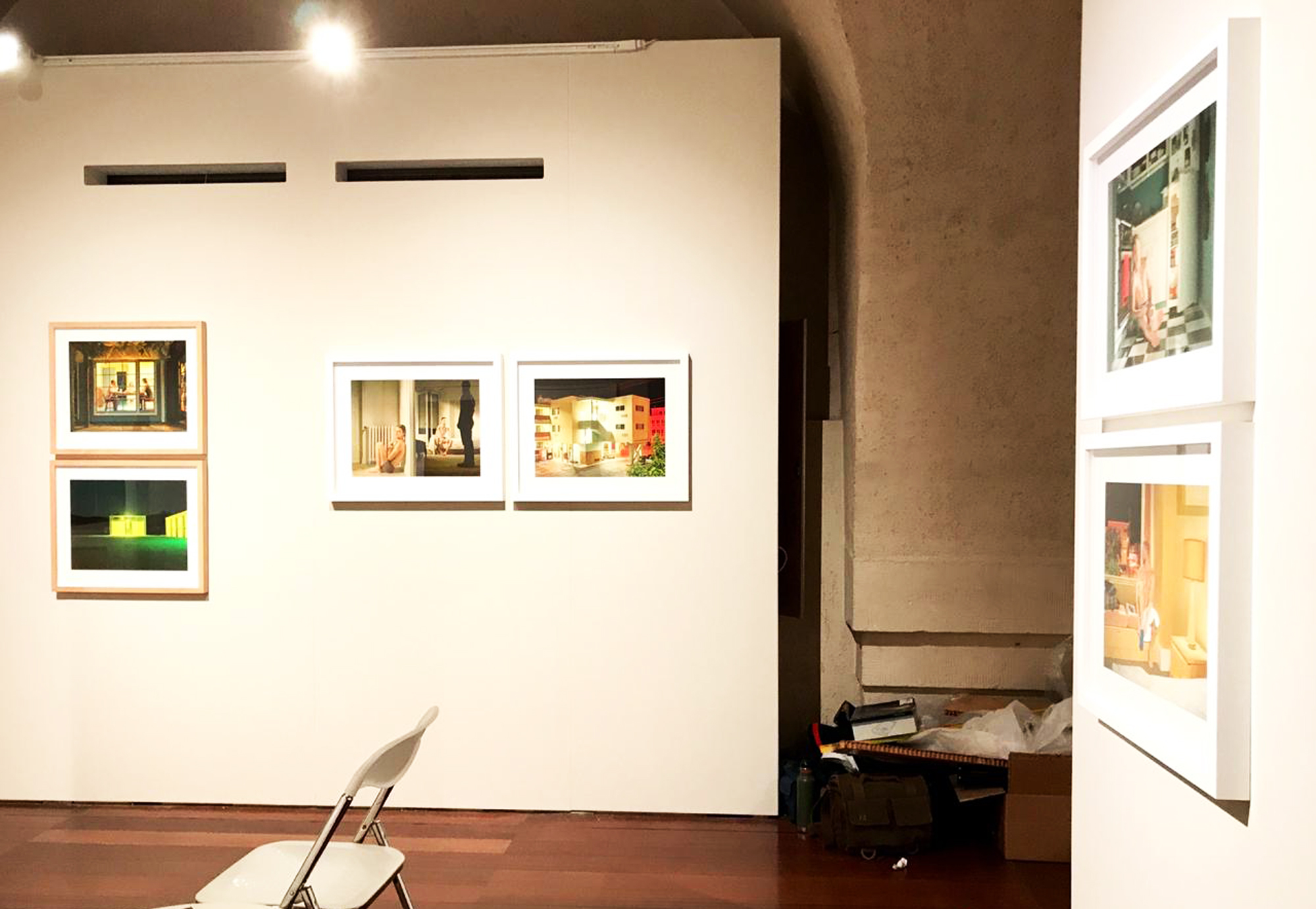

Danila Tkachenko
Oasis 1
Archival Pigment Print
2018
Available in 2 sizes: Ed. 9: 130x100cm & Ed. 4:
200 x 150 cm
Oasis (Commissioned by Qatar Museums: Qatar-Russia ’18 Culture Photographic Exchange). Premiered in Photo London 2019 by ALMANAQUE fotográfica. Middle East has an ancient human history… Qatar was populated in the 3rd millennium B.C. Since then, despite the desert environment, its population has farmed, harvested, fished and built. Like other areas of the world, over the past 30 years Qatar has enjoyed some of the fastest economic development rates from the entire history. New billionaires flourish in the sand dunes. The appearance of Middle East cities was been transformed rapidly, yet the rest is exactly the same as thousands of years ago. Infrastructure improved as did education with new modern roads and vast crystal skyscrapers with imposible architecture standing on the horizon as a mirage. Expensive cars, top services and state-of-the-art technologies. It seems that the new capitalist heaven does not imply physical labour for the Qataris, since workers were invited from abroad to perform physical labour. Qatari drink from their past traditions to create a new identity in a new era yet to be described. In the seek of a new promised land, what is now the promised land?

Approximate view with unframed print. Ask for exact available dimensions
Danila Tkachenko
Oasis: 2
Archival Pigment Print
2018
130 x 100 cm
Oasis (Commissioned by Qatar Museums: Qatar-Russia ’18 Culture Photographic Exchange). Premiered in Photo London 2019 by ALMANAQUE fotográfica. Middle East has an ancient human history… Qatar was populated in the 3rd millennium B.C. Since then, despite the desert environment, its population has farmed, harvested, fished and built. Like other areas of the world, over the past 30 years Qatar has enjoyed some of the fastest economic development rates from the entire history. New billionaires flourish in the sand dunes. The appearance of Middle East cities was been transformed rapidly, yet the rest is exactly the same as thousands of years ago. Infrastructure improved as did education with new modern roads and vast crystal skyscrapers with imposible architecture standing on the horizon as a mirage. Expensive cars, top services and state-of-the-art technologies. It seems that the new capitalist heaven does not imply physical labour for the Qataris, since workers were invited from abroad to perform physical labour. Qatari drink from their past traditions to create a new identity in a new era yet to be described. In the seek of a new promised land, what is now the promised land?

Approximate view with unframed print. Ask for exact available dimensions
Danila Tkachenko
Oasis 3
Archival Pigment Print
2018
Available in 2 sizes: Ed. 9: 130x100cm & Ed. 4:
200 x 150 cm
Oasis (Commissioned by Qatar Museums: Qatar-Russia ’18 Culture Photographic Exchange). Premiered in Photo London 2019 by ALMANAQUE fotográfica. Middle East has an ancient human history… Qatar was populated in the 3rd millennium B.C. Since then, despite the desert environment, its population has farmed, harvested, fished and built. Like other areas of the world, over the past 30 years Qatar has enjoyed some of the fastest economic development rates from the entire history. New billionaires flourish in the sand dunes. The appearance of Middle East cities was been transformed rapidly, yet the rest is exactly the same as thousands of years ago. Infrastructure improved as did education with new modern roads and vast crystal skyscrapers with imposible architecture standing on the horizon as a mirage. Expensive cars, top services and state-of-the-art technologies. It seems that the new capitalist heaven does not imply physical labour for the Qataris, since workers were invited from abroad to perform physical labour. Qatari drink from their past traditions to create a new identity in a new era yet to be described. In the seek of a new promised land, what is now the promised land?
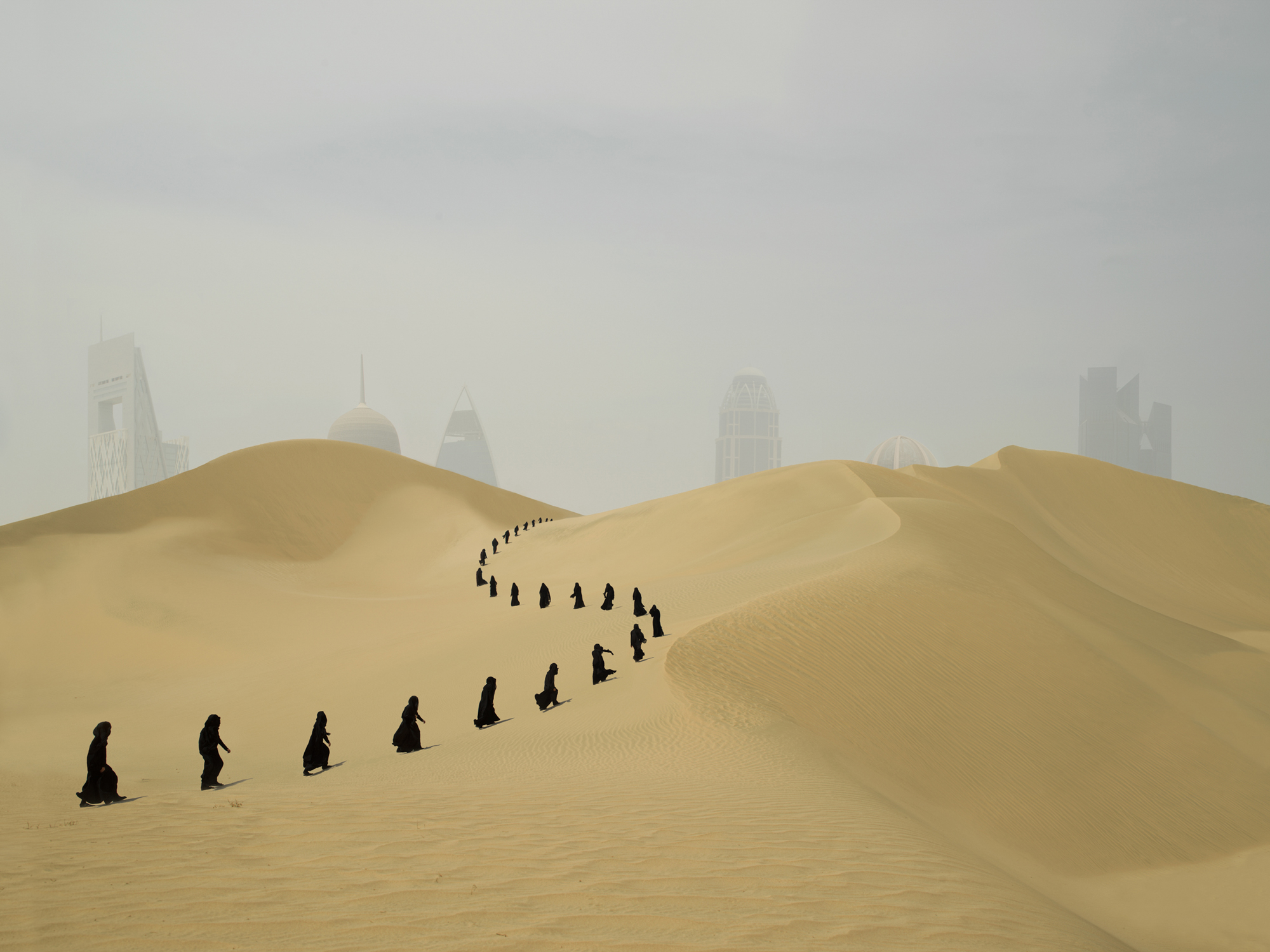
Approximate view with unframed print. Ask for exact available dimensions
Danila Tkachenko
Oasis: 4
Archival Pigment Print
2018
200 x 150 cm
Oasis (Commissioned by Qatar Museums: Qatar-Russia ’18 Culture Photographic Exchange). Premiered in Photo London 2019 by ALMANAQUE fotográfica. Middle East has an ancient human history… Qatar was populated in the 3rd millennium B.C. Since then, despite the desert environment, its population has farmed, harvested, fished and built. Like other areas of the world, over the past 30 years Qatar has enjoyed some of the fastest economic development rates from the entire history. New billionaires flourish in the sand dunes. The appearance of Middle East cities was been transformed rapidly, yet the rest is exactly the same as thousands of years ago. Infrastructure improved as did education with new modern roads and vast crystal skyscrapers with imposible architecture standing on the horizon as a mirage. Expensive cars, top services and state-of-the-art technologies. It seems that the new capitalist heaven does not imply physical labour for the Qataris, since workers were invited from abroad to perform physical labour. Qatari drink from their past traditions to create a new identity in a new era yet to be described. In the seek of a new promised land, what is now the promised land?
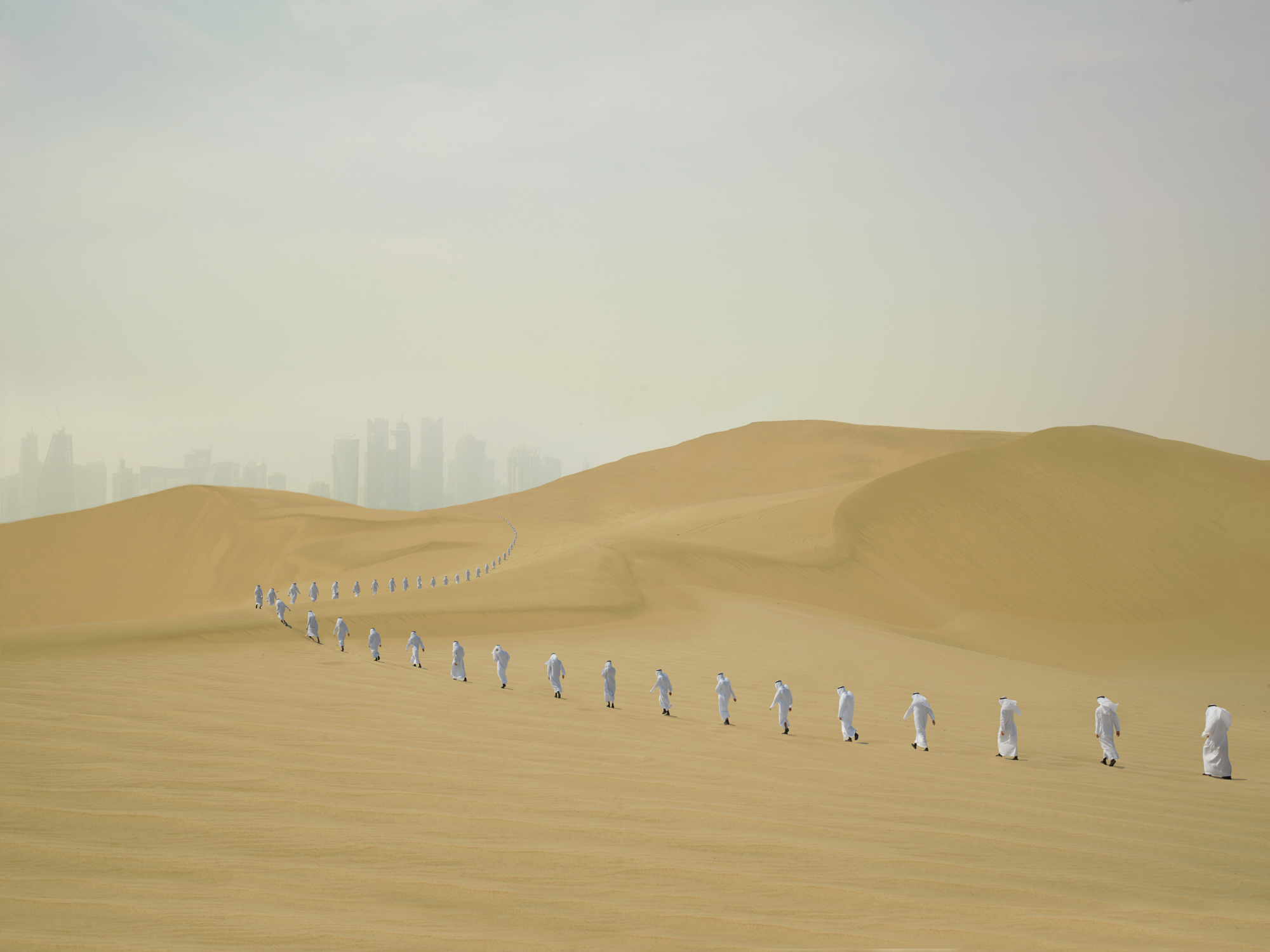
Approximate view with unframed print. Ask for exact available dimensions
Danila Tkachenko
Oasis 5
Archival Pigment Print
2018
Available in 2 sizes: Ed. 9: 130x100cm & Ed. 4:
200 x 150 cm
Oasis (Commissioned by Qatar Museums: Qatar-Russia ’18 Culture Photographic Exchange). Premiered in Photo London 2019 by ALMANAQUE fotográfica. Middle East has an ancient human history… Qatar was populated in the 3rd millennium B.C. Since then, despite the desert environment, its population has farmed, harvested, fished and built. Like other areas of the world, over the past 30 years Qatar has enjoyed some of the fastest economic development rates from the entire history. New billionaires flourish in the sand dunes. The appearance of Middle East cities was been transformed rapidly, yet the rest is exactly the same as thousands of years ago. Infrastructure improved as did education with new modern roads and vast crystal skyscrapers with imposible architecture standing on the horizon as a mirage. Expensive cars, top services and state-of-the-art technologies. It seems that the new capitalist heaven does not imply physical labour for the Qataris, since workers were invited from abroad to perform physical labour. Qatari drink from their past traditions to create a new identity in a new era yet to be described. In the seek of a new promised land, what is now the promised land?
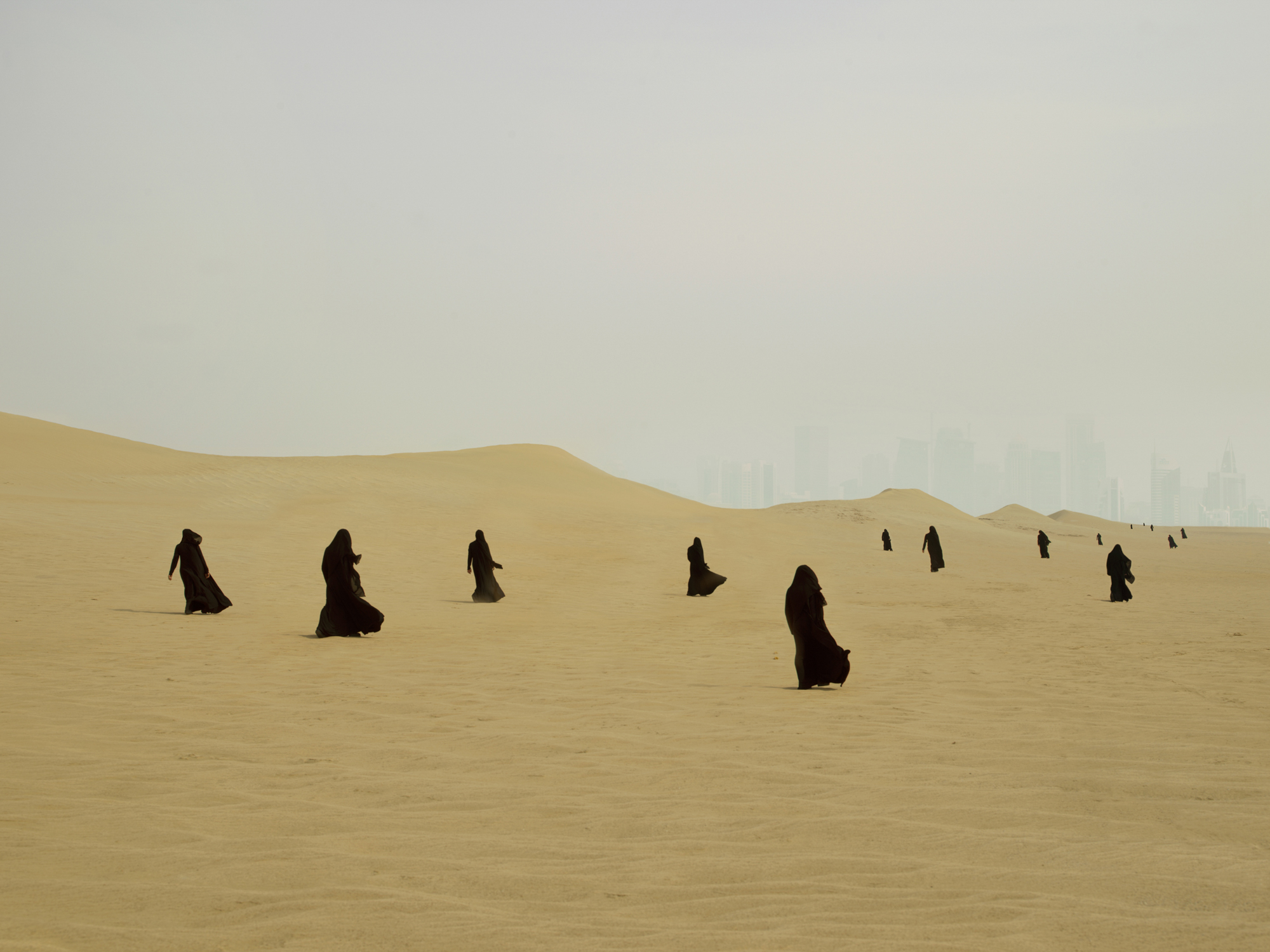
Approximate view with unframed print. Ask for exact available dimensions
Danila Tkachenko
Oasis 6
Archival Pigment Print
2018
This project was commissioned by Qatar Museums as part of Qatar-Russia 2018 year of culture photographic exchange.
200 x 150 cm
This project was commissioned by Qatar Museums as part of Qatar-Russia 2018 year of culture photographic exchange.
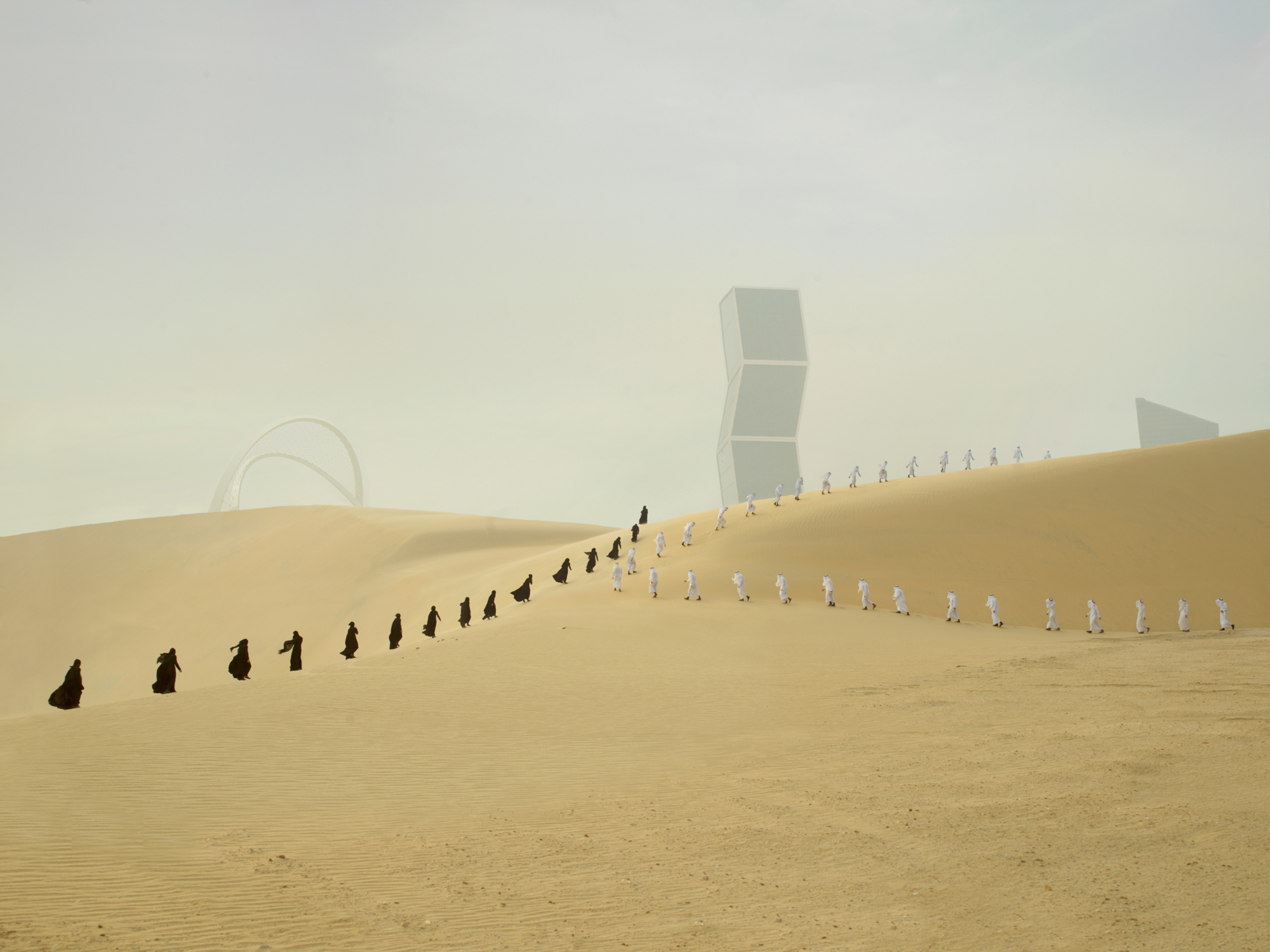
Approximate view with unframed print. Ask for exact available dimensions
Fernando Bayona
Out of the Blue: Boy
Inkjet print
Ed. S: 3
Ed. M: 3
Ed. L: 2
+2 A.P.
S 65x53 cm
M 106x84 cm
L 135 x 106 cm
Something that happens unexpectedly and places us in a kind of vertex. From that point, it is difficult not to see one's existence as something dividing us forever in before and after. The diagnosis of a disease that will change us without remission, the arrival of someone who gives a turnaround to our universe or a circumstance which shakes the fundaments of what we known. Certainly, the Anglo-Saxon expression Out of the blue can refer to that something good or bad appearing out of nowhere -without previous warning. However, Fernando Bayona has focused its search on that uncertainty that is based within us. Leaving us in a deep state of melancholy. In out of the blue, the Bayona’s story becomes opaque, placing a singular emphasis on life’s mystery, in the eyes of all inexplicable, and that we will pose before the scene photographed in a disturbing diatribe: Something ends to happen, yet that something is in the mood of the characters. In some of these images, our contaminated look could reach erroneous conclusions, perhaps dark and remote. In an interesting shooting that drinks from the cinematographic schemes, Bayona stages a collection of real locations that have been photographed in exceptional light conditions - thanks to a generator moved through out the different scenarios- then post-produced with an intense complex processed addressing the image from a pictorial point of view. The artist, finally, lets us decide how do they correspond to inside or outside, so that the expectation’s experiences and imagination become essential to the story’s interpretation.
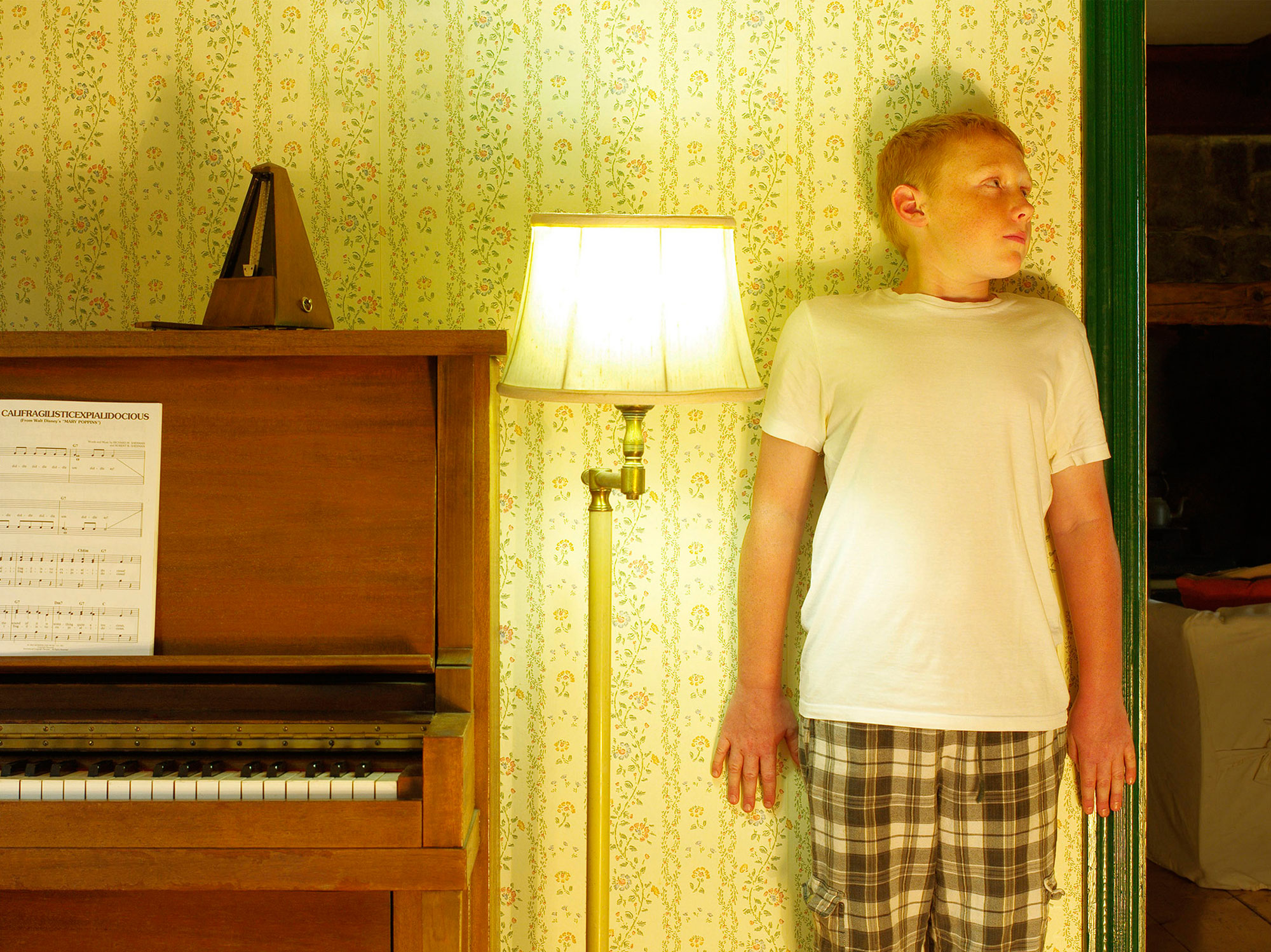
Approximate view with unframed print. Ask for exact available dimensions
Fernando Bayona
Out of the Blue: The Dinner
Inkjet print
Ed. S: 3
Ed. M: 3
Ed. L: 2
+2 A.P.
S 65x53 cm
M 106x84 cm
L 135 x 106 cm
Algo que ocurre inesperadamente, que nos sitúa en una especie de vértice. Desde ese punto, es difícil no ver la propia existencia como algo que se divide para siempre en un antes y un después. Puede ser el diagnóstico de una enfermedad que nos cambiará sin remisión, la llegada de alguien que da un vuelco a nuestro universo o una circunstancia que haga inestable nuestra construcción de lo conocido. Ciertamente, la expresión anglosajona Out of the blue puede referirse a ese algo que aparece de la nada -sin previo avisotanto en sentido positivo como en negativo. Sin embargo, Fernando Bayona ha centrado su búsqueda en esa incertidumbre que se asienta en nosotros, dejándonos en un profundo estado de melancolía. Quienes recuerdan su serie fotográfica The life of the other (2013/14) comprenderán que esta investigación parece deudora de aquella, por cuanto constituía la representación de un compendio de inquietudes humanas en las que el punto de inflexión se erigía como auténtico recurso narrativo, situando al espectador en un tiempo suspendido. En out of the blue el relato se nos opaca, poniendo un singular énfasis en aquello misterioso de la vida, a los ojos de todos inexplicable, y que nos planteará ante la escena fotografiada en una inquietante diatriba: Algo acaba de suceder, pero ese algo está en el ánimo de los personajes. En buena parte de estas imágenes, nuestra mirada contaminada podría llegar a conclusiones erróneas, muchas de las veces oscuras y remotas. En un interesante contraplano que bebe de los esquemas cinematográficos, Bayona exhibe una colección de localizaciones reales que han sido fotografiadas en condiciones excepcionales de luz -gracias a un generador propio que trasladaba a los diferentes escenarios- y postproducidas en un intensísimo y complejo procesado que aborda la imagen desde planteamientos cercanos a lo pictórico. El artista, por último, nos deja decidir de qué forma se corresponden interior y exterior, de manera que las vivencias y el imaginario de los receptores se convierten en esenciales para la interpretación del relato.

Approximate view with unframed print. Ask for exact available dimensions
Fernando Bayona
Out of the Blue: Street
Inkjet print
Ed. S: 3
Ed. M: 3
Ed. L: 2
+2 A.P.
S 65x53 cm
M 106x84 cm
L 135 x 106 cm
Something that happens unexpectedly and places us in a kind of vertex. From that point, it is difficult not to see one's existence as something dividing us forever in before and after. The diagnosis of a disease that will change us without remission, the arrival of someone who gives a turnaround to our universe or a circumstance which shakes the fundaments of what we known. Certainly, the Anglo-Saxon expression Out of the blue can refer to that something good or bad appearing out of nowhere -without previous warning. However, Fernando Bayona has focused its search on that uncertainty that is based within us. Leaving us in a deep state of melancholy. In out of the blue, the Bayona’s story becomes opaque, placing a singular emphasis on life’s mystery, in the eyes of all inexplicable, and that we will pose before the scene photographed in a disturbing diatribe: Something ends to happen, yet that something is in the mood of the characters. In some of these images, our contaminated look could reach erroneous conclusions, perhaps dark and remote. In an interesting shooting that drinks from the cinematographic schemes, Bayona stages a collection of real locations that have been photographed in exceptional light conditions - thanks to a generator moved through out the different scenarios- then post-produced with an intense complex processed addressing the image from a pictorial point of view. The artist, finally, lets us decide how do they correspond to inside or outside, so that the expectation’s experiences and imagination become essential to the story’s interpretation.
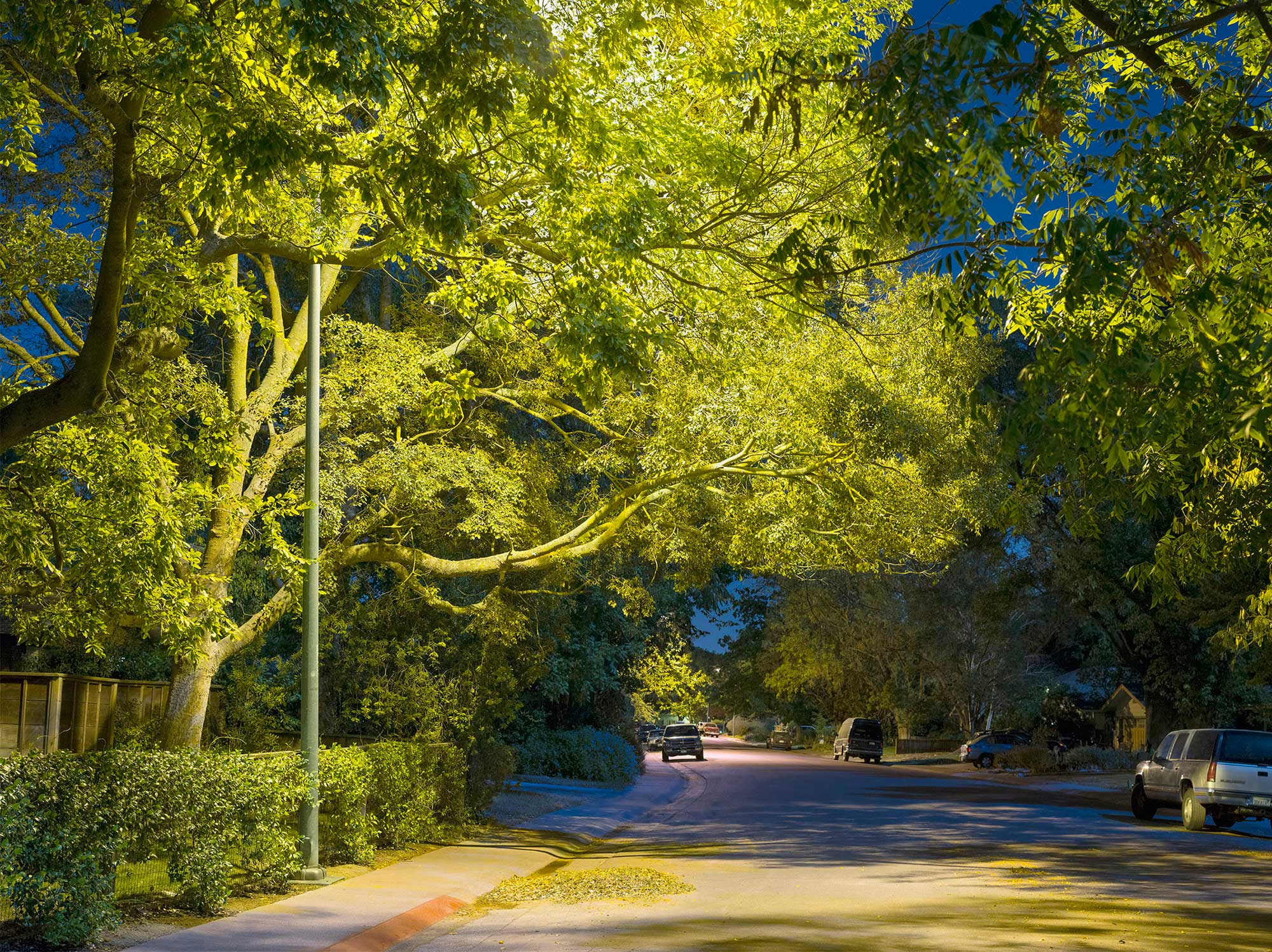
Approximate view with unframed print. Ask for exact available dimensions
Fernando Bayona
Fernando Bayona
Inkjet print
Ed. S: 3
Ed. M: 3
Ed. L: 2
+2 A.P.
S 65x53 cm
M 106x84 cm
L 135 x 106 cm
Something that happens unexpectedly and places us in a kind of vertex. From that point, it is difficult not to see one's existence as something dividing us forever in before and after. The diagnosis of a disease that will change us without remission, the arrival of someone who gives a turnaround to our universe or a circumstance which shakes the fundaments of what we known. Certainly, the Anglo-Saxon expression Out of the blue can refer to that something good or bad appearing out of nowhere -without previous warning. However, Fernando Bayona has focused its search on that uncertainty that is based within us. Leaving us in a deep state of melancholy. In out of the blue, the Bayona’s story becomes opaque, placing a singular emphasis on life’s mystery, in the eyes of all inexplicable, and that we will pose before the scene photographed in a disturbing diatribe: Something ends to happen, yet that something is in the mood of the characters. In some of these images, our contaminated look could reach erroneous conclusions, perhaps dark and remote. In an interesting shooting that drinks from the cinematographic schemes, Bayona stages a collection of real locations that have been photographed in exceptional light conditions - thanks to a generator moved through out the different scenarios- then post-produced with an intense complex processed addressing the image from a pictorial point of view. The artist, finally, lets us decide how do they correspond to inside or outside, so that the expectation’s experiences and imagination become essential to the story’s interpretation. Pedro Alarcón, Curator, Spain.

Approximate view with unframed print. Ask for exact available dimensions
Fernando Bayona
Broken Roses
Impresión Ink Jet
Ed 2
60 x 50 cm
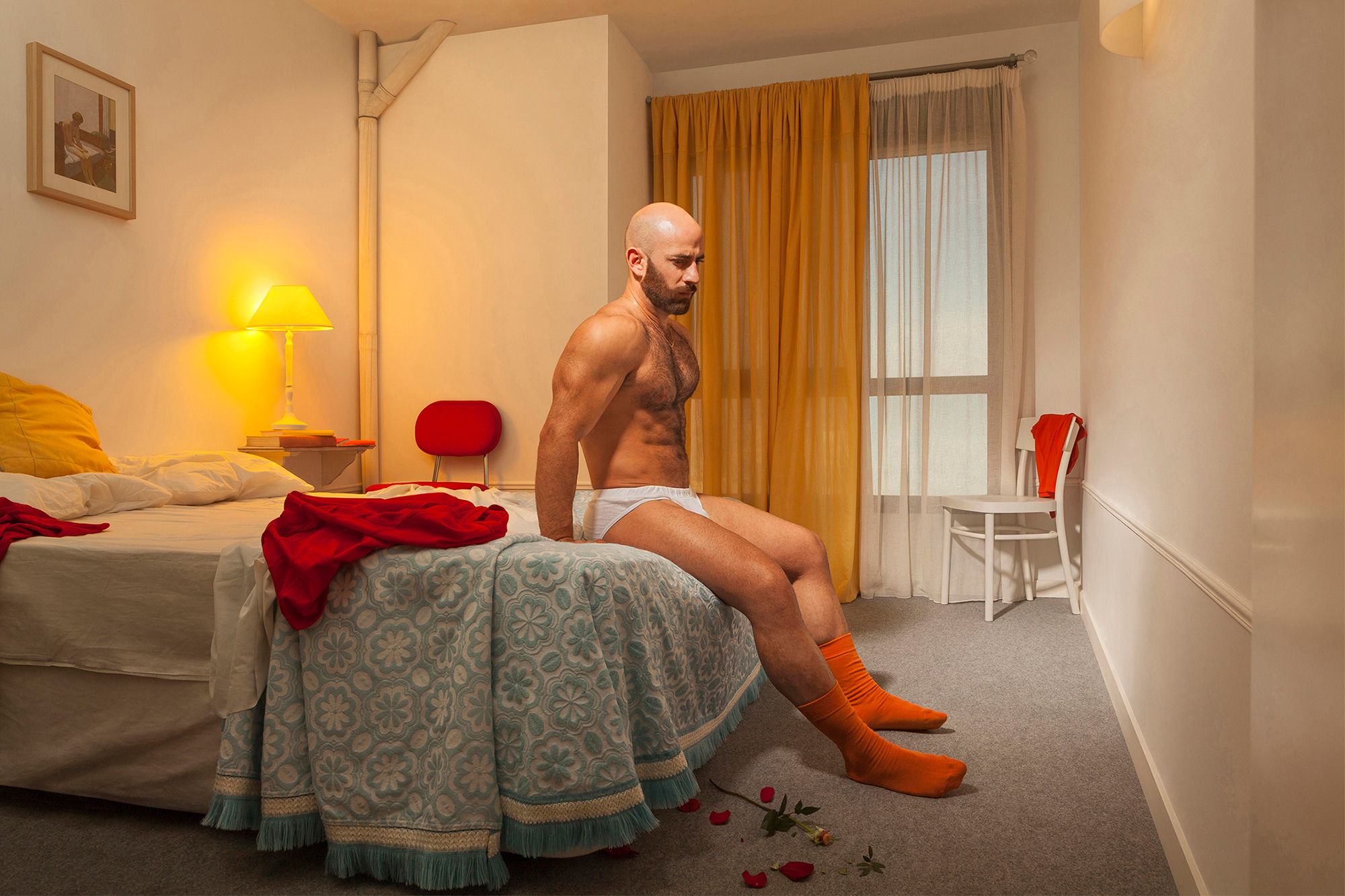
Approximate view with unframed print. Ask for exact available dimensions
Fernando Bayona
Out of the Blue: At Home
Inkjet print
Ed. S: 3
Ed. M: 3
Ed. L: 2
+2 A.P.
S 65x53 cm
M 106x84 cm
L 135 x 106 cm
Algo que ocurre inesperadamente, que nos sitúa en una especie de vértice. Desde ese punto, es difícil no ver la propia existencia como algo que se divide para siempre en un antes y un después. Puede ser el diagnóstico de una enfermedad que nos cambiará sin remisión, la llegada de alguien que da un vuelco a nuestro universo o una circunstancia que haga inestable nuestra construcción de lo conocido. Ciertamente, la expresión anglosajona Out of the blue puede referirse a ese algo que aparece de la nada -sin previo avisotanto en sentido positivo como en negativo. Sin embargo, Fernando Bayona ha centrado su búsqueda en esa incertidumbre que se asienta en nosotros, dejándonos en un profundo estado de melancolía. Quienes recuerdan su serie fotográfica The life of the other (2013/14) comprenderán que esta investigación parece deudora de aquella, por cuanto constituía la representación de un compendio de inquietudes humanas en las que el punto de inflexión se erigía como auténtico recurso narrativo, situando al espectador en un tiempo suspendido. En out of the blue el relato se nos opaca, poniendo un singular énfasis en aquello misterioso de la vida, a los ojos de todos inexplicable, y que nos planteará ante la escena fotografiada en una inquietante diatriba: Algo acaba de suceder, pero ese algo está en el ánimo de los personajes. En buena parte de estas imágenes, nuestra mirada contaminada podría llegar a conclusiones erróneas, muchas de las veces oscuras y remotas. En un interesante contraplano que bebe de los esquemas cinematográficos, Bayona exhibe una colección de localizaciones reales que han sido fotografiadas en condiciones excepcionales de luz -gracias a un generador propio que trasladaba a los diferentes escenarios- y postproducidas en un intensísimo y complejo procesado que aborda la imagen desde planteamientos cercanos a lo pictórico. El artista, por último, nos deja decidir de qué forma se corresponden interior y exterior, de manera que las vivencias y el imaginario de los receptores se convierten en esenciales para la interpretación del relato.
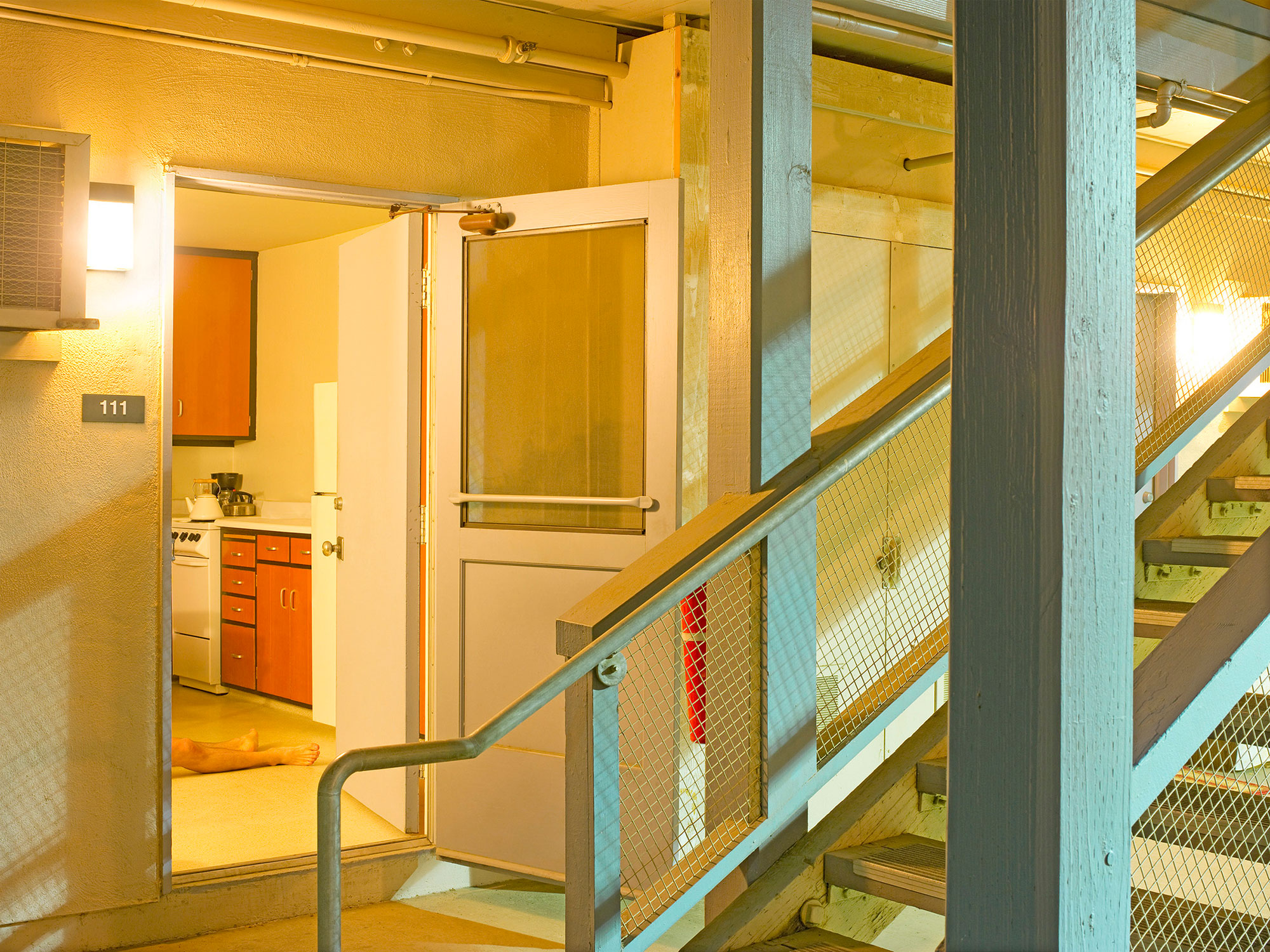
Approximate view with unframed print. Ask for exact available dimensions
Fernando Bayona
Alzheimer
Impresión Ink Jet
Ed 2
60 x 50 cm
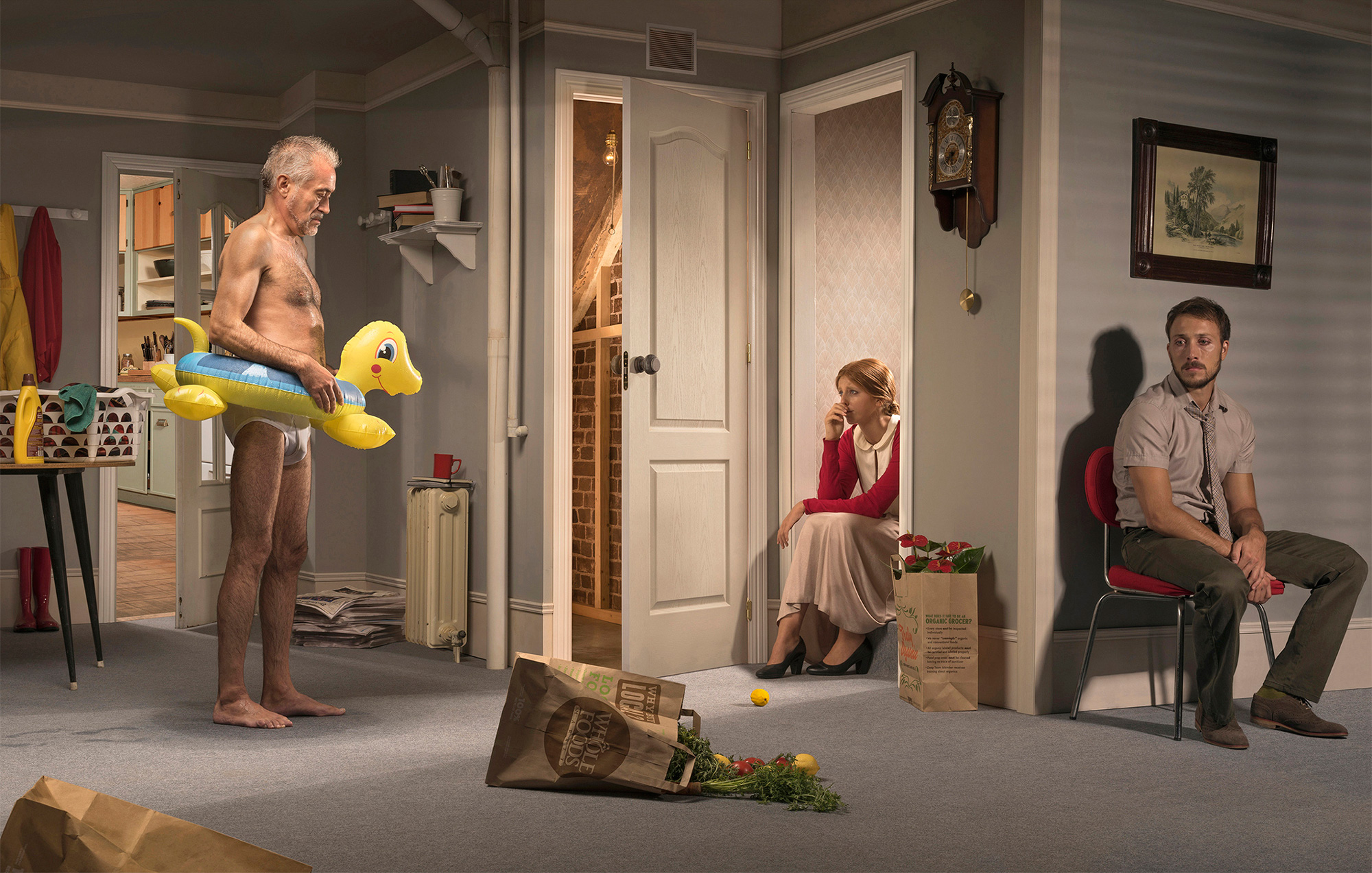
Approximate view with unframed print. Ask for exact available dimensions
Fernando Bayona
Circus Christi: Crucifixión
Inkjet print
Ed. S: 3
Ed. M: 3
Ed. L: 2
+2 A.P.
S 65x53 cm
M 106x84 cm
L 135 x 106 cm
Circus Christi nos propone una subversiva reversión de la vida de Jesús, emplazada en la periferia de cualquier gran ciudad y ambientada temporalmente desde los años 70 hasta nuestros días. Un elenco de actores acomete las interpretaciones de unos personajes ficticios que guardan grandes paralelismos con los que aparecen realmente en los evangelios del Nuevo Testamento. El proyecto analiza los límites de la alteración de la Historia, la libertad de expresión y el significado que el escarnio dogmático poseen en la sociedad actual. Entra así en conflicto con los intereses ideológicos, culturales y económicos de colectivos religiosos o políticos que tratan de censurar cualquier tipo de manifestación que atente contra las bases sobre los que se asientan sus fuentes de poder. Las 14 imágenes que componen Circus Christi suponen un vía crucis contemporáneo que narra la intensa vida de Jesús, el vocalista y líder del ficticio grupo de música Circus Christi. Las 3 tomas iniciales están ambientadas a principios de los años 70 cuando su padre José, un camello de poca monta pasa condena en la cárcel, y su madre María se ve obligada a ejercer la prostitución para sacar adelante a su familia. Ya en la actualidad, Jesús vive con María Magdalena hasta que conoce a Juan Bautista, hecho que cambiará bruscamente su vida desde ese momento y desencadenará los acontecimientos del resto de instantáneas de la serie.
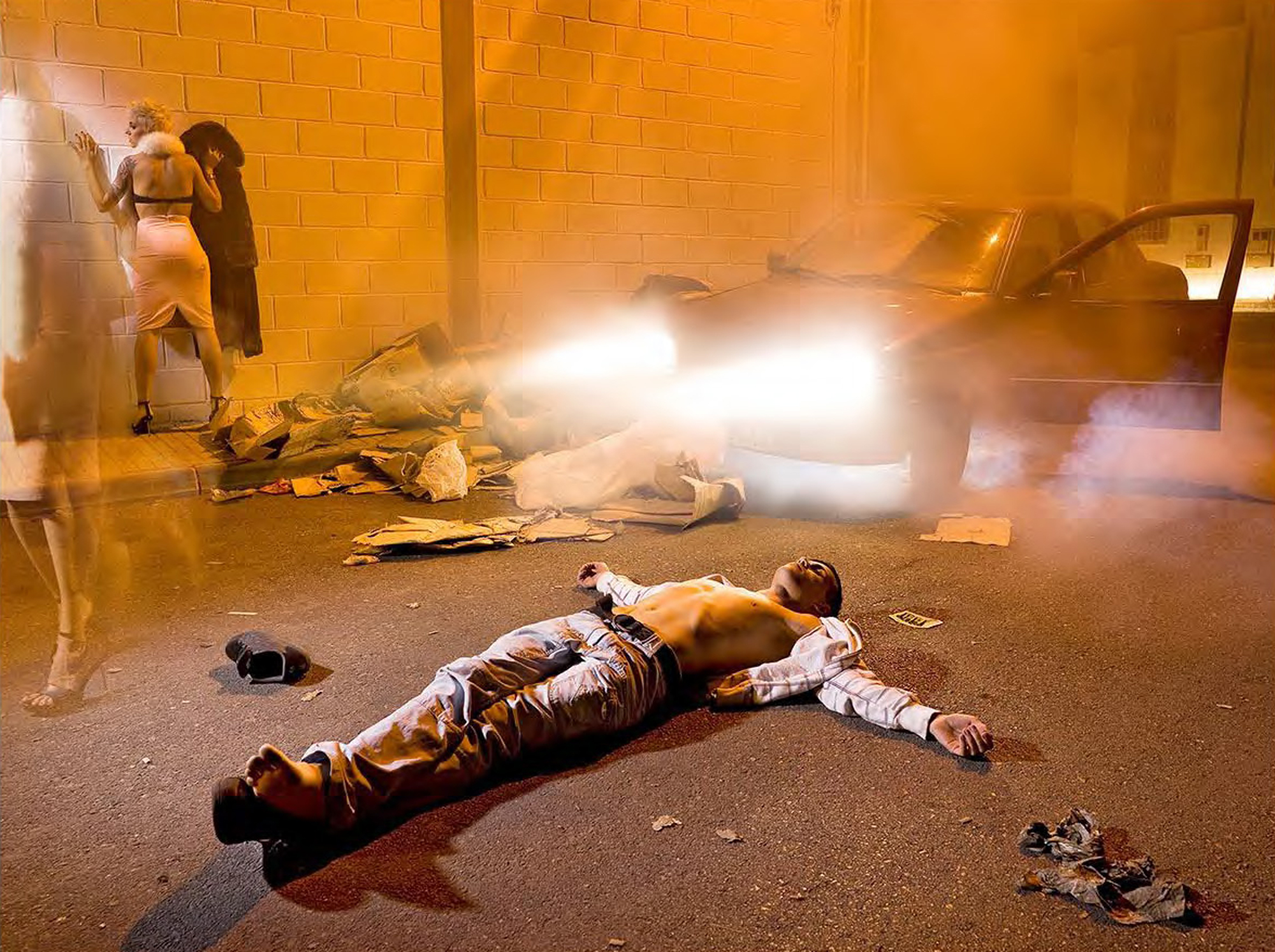
Approximate view with unframed print. Ask for exact available dimensions
Fernando Bayona
The Life of the Other: Motel Capri
Impresión Ink Jet
Ed 2
135 x 106 cm

Approximate view with unframed print. Ask for exact available dimensions
Fernando Bayona
Out of the Blue: Still Life
Impresión Ink Jet
Ed. 1/2
135 x 106 cm
Something that happens unexpectedly and places us in a kind of vertex. From that point, it is difficult not to see one's existence as something dividing us forever in before and after. The diagnosis of a disease that will change us without remission, the arrival of someone who gives a turnaround to our universe or a circumstance which shakes the fundaments of what we known. Certainly, the Anglo-Saxon expression Out of the blue can refer to that something good or bad appearing out of nowhere -without previous warning. However, Fernando Bayona has focused its search on that uncertainty that is based within us. Leaving us in a deep state of melancholy. In out of the blue, the Bayona’s story becomes opaque, placing a singular emphasis on life’s mystery, in the eyes of all inexplicable, and that we will pose before the scene photographed in a disturbing diatribe: Something ends to happen, yet that something is in the mood of the characters. In some of these images, our contaminated look could reach erroneous conclusions, perhaps dark and remote. In an interesting shooting that drinks from the cinematographic schemes, Bayona stages a collection of real locations that have been photographed in exceptional light conditions - thanks to a generator moved through out the different scenarios- then post-produced with an intense complex processed addressing the image from a pictorial point of view. The artist, finally, lets us decide how do they correspond to inside or outside, so that the expectation’s experiences and imagination become essential to the story’s interpretation. Pedro Alarcón, Curator, Spain.
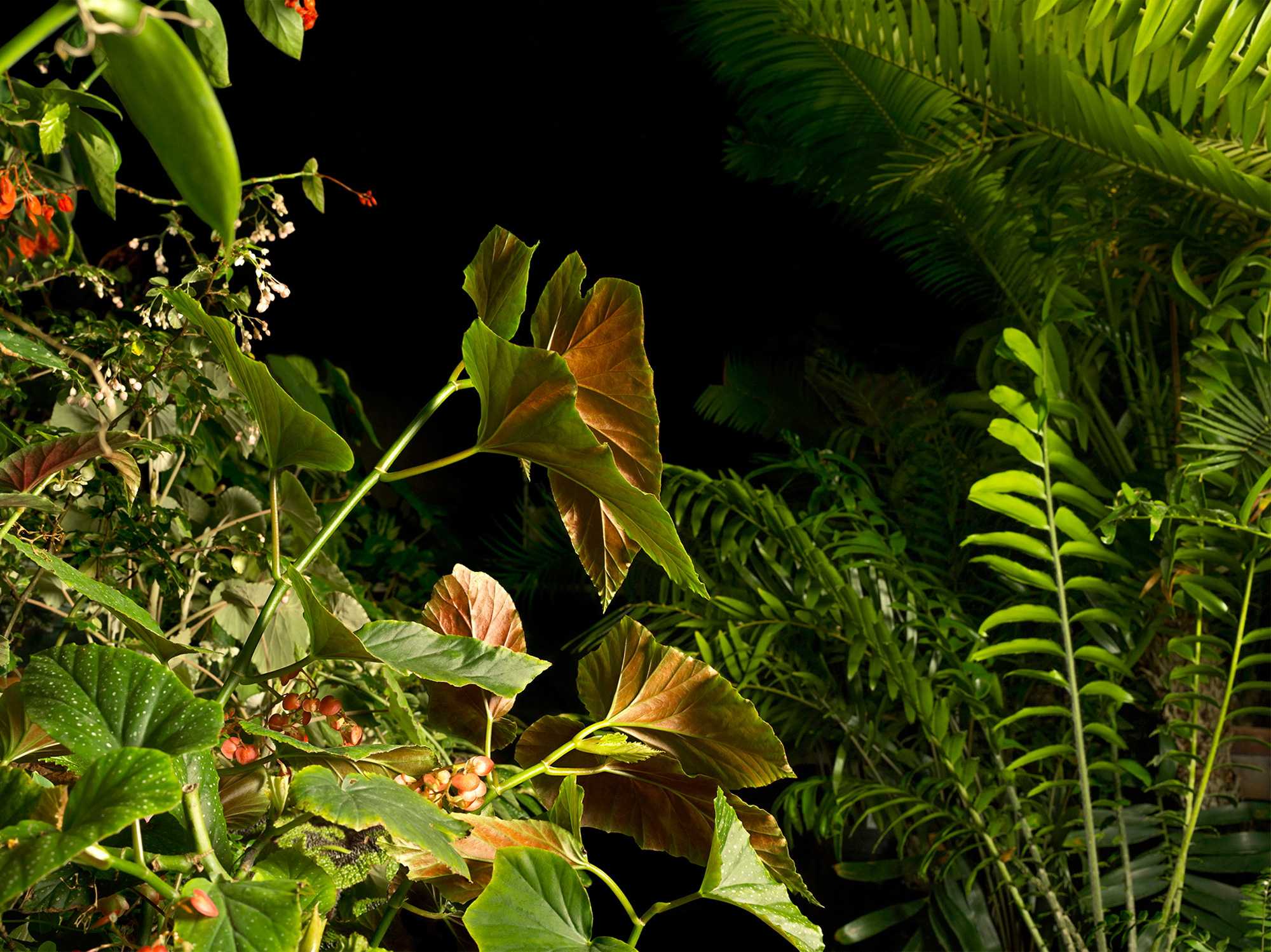
Approximate view with unframed print. Ask for exact available dimensions
Fernando Bayona
The Life of the Other: The client
Impresión Ink Jet
Available in 3 sizes: Ed. 3: 65 x 53 cm, Ed. 3: 106 x 84 cm & Ed. 2: 135 x 106 cm.
65 x 53 cm
A research project halfway between documentary and staged photography composed of 16 images, the project reflects on the use of the body as work support by three professional collectives, that is, as an object of intangible desire, in the case of strippers or porn actors, or those that are subordinated through an economic consideration, in the case of the hustlers The title of the series refers to the game of identities and fictions carried out by these workers to protect their privacy. A sort of "alter egos" or virtual masks that dissociate them from their person, a construct of themselves created to develop their profession through the representation of a feigned character, which mutates to adapt to the work demands or demands of different clients, thus becoming - consciously or unconsciously - permanent actors of the same and endowing it with a very specific life and characteristics. The initial phase of the project is based on interviews with the different participants of the study, thus realizing an approach to the real person, depriving it of the protective device of the mask to be able to understand its reality, its experiences and experiences. Starting from the stories obtained, the project reconstructs photographically some of the passages of its intense life, a mise en scène that gives visibility to stories that tend to be hidden by shame or fear of social rejection due to the stigmatization of the profession, a way to make public something that in nature is very intimate and personal. The characters appearing in each image are played by professional actors, who feel and suffer the lives of the real protagonists, and mix with them who reinterpret their own experiences. This is established as a strategy agreed with each and every one of them to preserve their anonymity despite showing their face before the camera. A double fiction, that of the character that this typology of professionals creates for themselves and protects them from society, and that they have to interpret in the photographic capture within the project, generating permanent doubt in the viewer who does not know who is the real and who the interpreter or interpreted. The project explores the special life characteristics of these workers, deepening in issues such as repressed desire, relationships, affective problems, the cultural environment, immigration, the profile of clients, different sexual practices, illness , loneliness, social stigma or double standards of citizenship among many other tangential issues. A kind of parallel reality in which economic, cultural, religious, health, or simple personal decisions are interrelated that tend to occur in the limits between the public and the private. Fernando, Bayona, Spain.
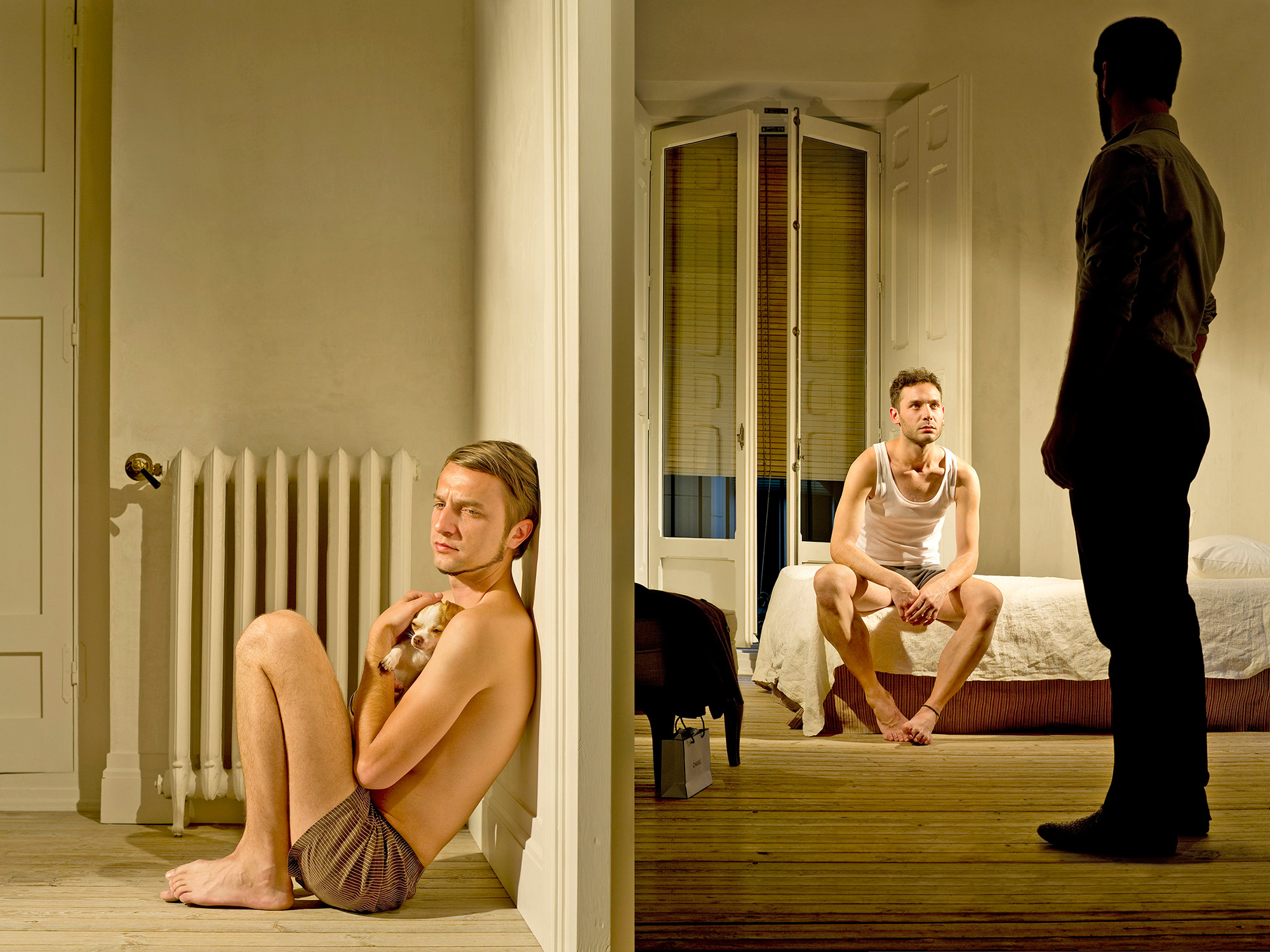
Approximate view with unframed print. Ask for exact available dimensions
Fernando Bayona
The Life of the Other: The Last Time
Impresión Ink Jet
Available in 3 sizes: Ed. 3: 65 x 53 cm, Ed. 3: 106 x 84 cm & Ed. 2: 135 x 106 cm.
65 x 53 cm
A research project halfway between documentary and staged photography composed of 16 images, the project reflects on the use of the body as work support by three professional collectives, that is, as an object of intangible desire, in the case of strippers or porn actors, or those that are subordinated through an economic consideration, in the case of the hustlers The title of the series refers to the game of identities and fictions carried out by these workers to protect their privacy. A sort of "alter egos" or virtual masks that dissociate them from their person, a construct of themselves created to develop their profession through the representation of a feigned character, which mutates to adapt to the work demands or demands of different clients, thus becoming - consciously or unconsciously - permanent actors of the same and endowing it with a very specific life and characteristics. The initial phase of the project is based on interviews with the different participants of the study, thus realizing an approach to the real person, depriving it of the protective device of the mask to be able to understand its reality, its experiences and experiences. Starting from the stories obtained, the project reconstructs photographically some of the passages of its intense life, a mise en scène that gives visibility to stories that tend to be hidden by shame or fear of social rejection due to the stigmatization of the profession, a way to make public something that in nature is very intimate and personal. The characters appearing in each image are played by professional actors, who feel and suffer the lives of the real protagonists, and mix with them who reinterpret their own experiences. This is established as a strategy agreed with each and every one of them to preserve their anonymity despite showing their face before the camera. A double fiction, that of the character that this typology of professionals creates for themselves and protects them from society, and that they have to interpret in the photographic capture within the project, generating permanent doubt in the viewer who does not know who is the real and who the interpreter or interpreted. The project explores the special life characteristics of these workers, deepening in issues such as repressed desire, relationships, affective problems, the cultural environment, immigration, the profile of clients, different sexual practices, illness , loneliness, social stigma or double standards of citizenship among many other tangential issues. A kind of parallel reality in which economic, cultural, religious, health, or simple personal decisions are interrelated that tend to occur in the limits between the public and the private. Fernando, Bayona, Spain. El proyecto reflexiona sobre el uso del cuerpo como soporte laboral por tres colectivos profesionales, esto es, como objeto de deseo intangible, caso de los stripper o actores porno, o bien aquellos que son subordinables a través de una contraprestación económica, en el caso de los chaperos. El título de la serie hace referencia al juego de identidades y ficciones llevadas a cabo por estos trabajadores para proteger su intimidad. Una suerte de "álter egos" o máscaras virtuales que los disocia de su persona, un constructo de sí mismos creado para desarrollar su profesión mediante la representación de un personaje fingido, que muta para adaptarse a las exigencias laborales o demandas de los diferentes clientes, convirtiéndose así -consciente o inconscientemente- en actores permanentes del mismo y dotándolo de una vida y características muy concretas. La fase inicial del proyecto se fundamenta en entrevistas a los diferentes participantes del estudio, realizando así un acercamiento a la persona real, desproveyéndola del artificio protector de la máscara para poder comprender su realidad, sus vivencias y experiencias. Partiendo de los relatos obtenidos el proyecto reconstruye fotográficamente alguno de los pasajes de su intensa vida, una mise en scène que da visibilidad a historias que tienden a ser ocultadas por vergüenza o miedo al rechazo social debido a la estigmatización de la profesión ejercida, un modo de hacer público algo que en naturaleza es muy íntimo y personal. De este modo, los personajes que aparecen en cada una de las imágenes son interpretados por actores profesionales, que sienten y padecen las vidas de los protagonistas reales, y se mezclan con éstos que reinterpretan nuevamente sus propias vivencias. Esto se establece como estrategia pactada con todos y cada uno de ellos para preservar su anonimato a pesar de mostrar su rostro ante la cámara. Creamos así una doble ficción, la del personaje que esta tipología de profesionales crean para sí y los protege de la sociedad, y el que han de interpretar en la toma fotográfica dentro del proyecto, generando la duda permanente en el espectador que no sabe quien es el real y quien el intérprete o interpretado. El proyecto indaga en las especiales características de vida de estos trabajadores, profundizando en cuestiones como el deseo reprimido, las relaciones de pareja, los problemas afectivos, el entorno cultural, la inmigración, el perfil de los clientes, las diferentes prácticas sexuales, la enfermedad, la soledad, el estigma social o la doble moral de la ciudadanía entre otras múltiples cuestiones tangenciales. Una suerte de realidad paralela en la que se interrelacionan condicionantes económicos, culturales, religiosos, sanitarios, o simples decisiones personales que tienden a darse en los límites entre lo público y lo privado.

Approximate view with unframed print. Ask for exact available dimensions
Mara Sánchez-Renero
El Cimarrón y su Fandango: Mar
2014
Edition A: 7 + 2 A.P.
Archival pigment print
68 x 60 cm
El Cimarrón y su Fandango (2014), habla alegóricamente sobre el pasado de una comunidad de origen africano y el viaje de sus miembros a través de las fluctuaciones de la historia colonial, su integración en el territorio mexicano, y su sentido de identidad dentro de ella. No obstante, ese pasado no es solo la descripción de un concepto histórico; es -sobre todo- una definición de la presente. Un presente, en el caso de sus descendientes afro-mexicanos, que permanecen marginados, inestables e inmemorables para el discurso hegemónico.
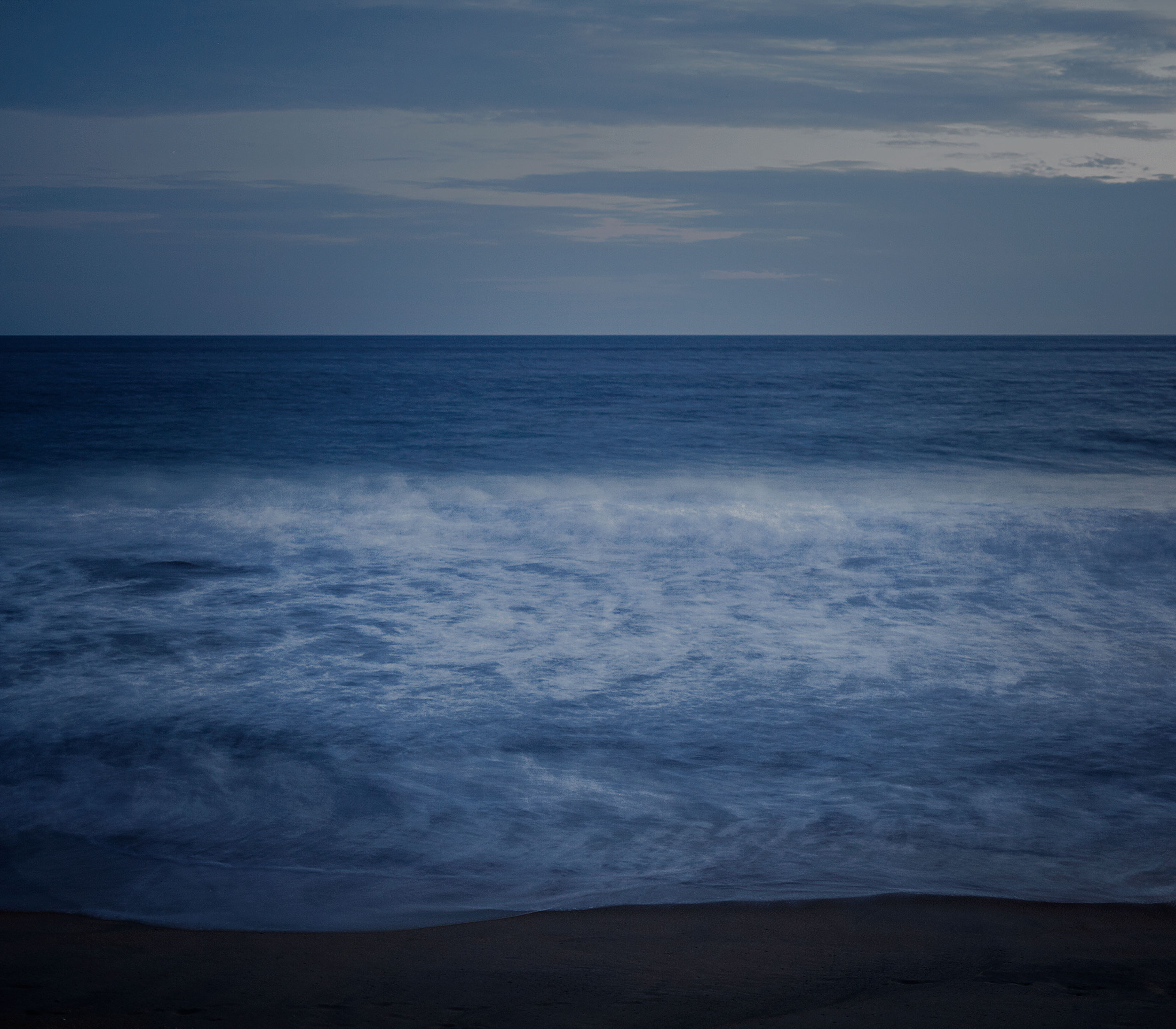
Approximate view with unframed print. Ask for exact available dimensions
Mara Sánchez Renero
El Cimarrón y su Fandango: Piedras
2014
Edition A: 7 + 2 A.P.
Archival pigment print
68 x 60 cm
El Cimarrón y su Fandango (2014) allegorically speaks about the Afro, Indigenous and Mulato communities in Mexico and its members’ journey through the fluctuations of colonial history, their integration into the Mexican territory, and their sense of identity. Yet that past isn’t merely a descriptive historical concept: it is, above all, a definition of the present. A present, in the case of their Afro-Mexican descendants, that remains marginal, unstable, and immemorial. This series has been largely published in global media including The New York Times, British Journal of Photography and belongs to some of the preeminent institutional collections in Mexico. Recently was shown at National Museum of Photography Centro de la Imagen, Museo Amparo and numerous museums through Asia Pacific with the support of Mexican Foreign Affairs Ministry.
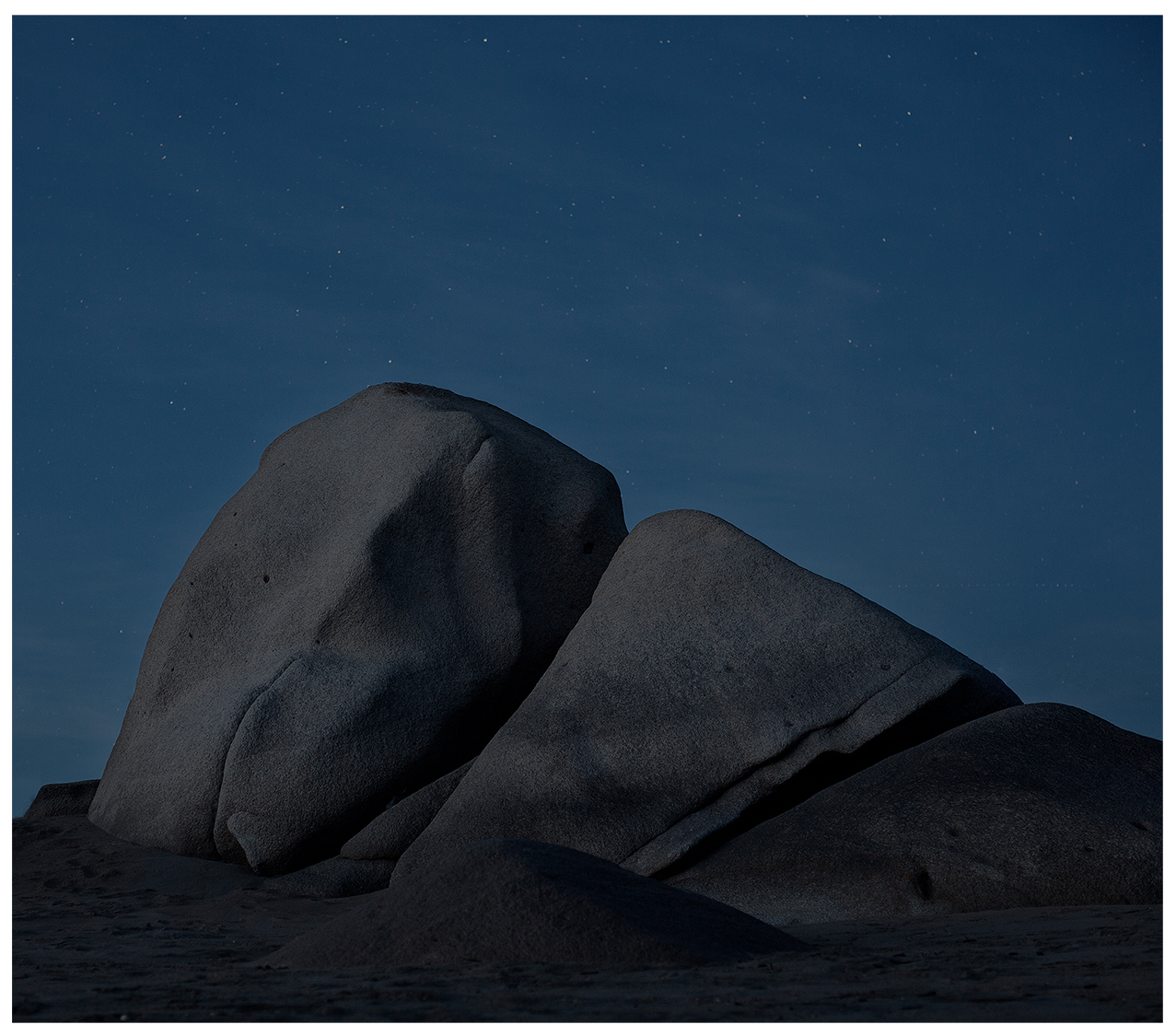
Approximate view with unframed print. Ask for exact available dimensions
El Cimarrón y su Fandango: Palmera
2014
Edition A: 7 + 2 A.P.
Archival pigment print
68 x 60 cm
El Cimarrón y su Fandango (2014), habla alegóricamente sobre el pasado de una comunidad de origen africano y el viaje de sus miembros a través de las fluctuaciones de la historia colonial, su integración en el territorio mexicano, y su sentido de identidad dentro de ella. No obstante, ese pasado no es solo la descripción de un concepto histórico; es -sobre todo- una definición de la presente. Un presente, en el caso de sus descendientes afro-mexicanos, que permanecen marginados, inestables e inmemorables para el discurso hegemónico.
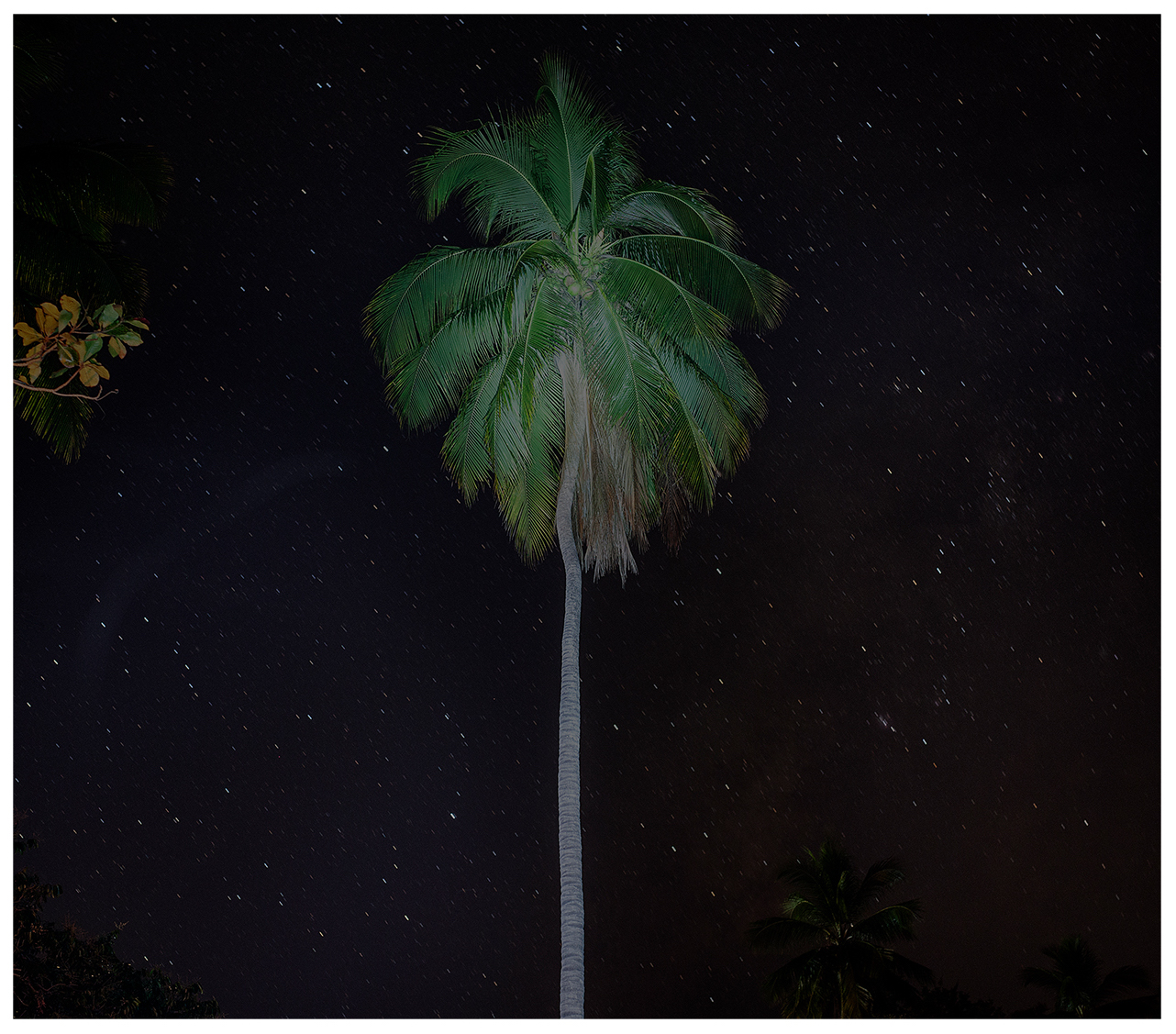
Approximate view with unframed print. Ask for exact available dimensions